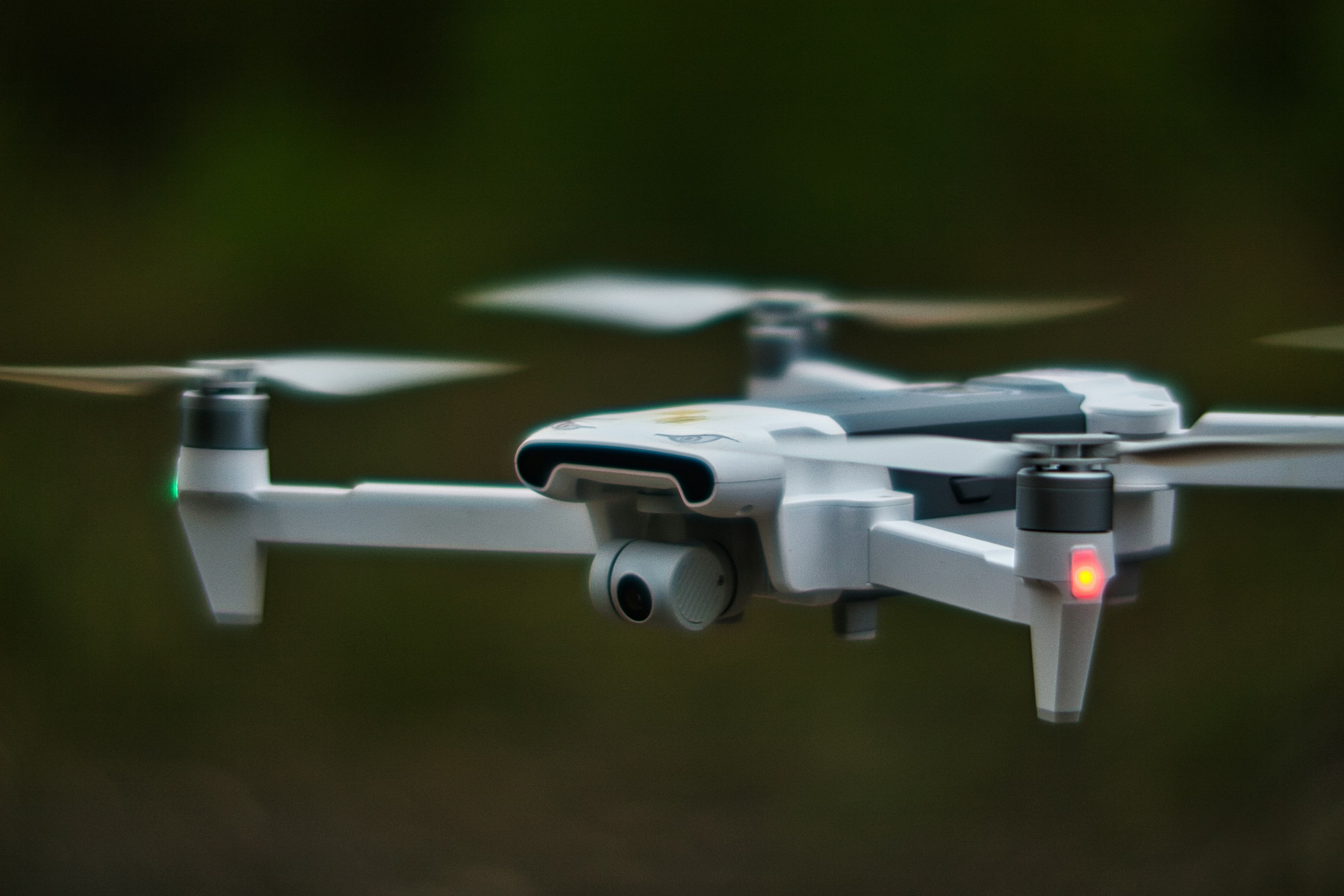
Negotiating Your UAV Job Offer: Equity, Bonuses & Perks Explained
How to Secure a Compensation Package That Matches Your High-Flying Role in the UK’s Drone & UAV Industry
Introduction
Unmanned Aerial Vehicles (UAVs), more commonly referred to as drones, have rapidly transitioned from niche military applications to a multibillion-pound commercial market. From aerial surveys in agriculture and construction to drone deliveries and advanced aerial photography, UAV technology is reshaping how businesses operate and solve problems. As a mid‑senior professional in the UAV sector—whether you specialise in flight control software, hardware design, mission planning, or regulatory compliance—your work is integral to driving innovation and safety in this fast-evolving field.
Amid such high demand, employers aren’t just competing on salary. Compensation packages can include equity, milestone-based bonuses, and a variety of perks that enable you to stay at the cutting edge of UAV technology. Despite these opportunities, many professionals focus mainly on base pay when negotiating an offer, potentially missing out on significant added value.
This guide explores how to negotiate a UAV job offer in the UK, diving into equity arrangements for emerging drone start-ups, performance bonuses tied to flight-testing or product launches, and perks that can support your ongoing development and well-being in this dynamic sector.
1. Why Negotiation Goes Beyond Salary
A strong base salary is vital, but in UAV roles, your impact often extends far beyond routine tasks. You might:
Develop advanced flight control algorithms or collision-avoidance systems
Improve battery life or payload integration for greater commercial viability
Ensure safety and regulatory compliance for large-scale drone deployments
Such contributions can drastically enhance company valuation, secure major contracts, or set new industry benchmarks. Recognising this, many UAV employers sweeten offers with multiple forms of compensation beyond monthly pay. Focusing exclusively on salary overlooks the potential rewards from equity, bonuses, and perks—especially in a rapidly growing field where your expertise can be a key differentiator.
2. Understanding Equity in UAV Roles
Equity grants can be especially lucrative in drone and UAV start-ups, which often attract investors impressed by the technology’s potential across logistics, inspection services, agriculture, and more. If your UAV designs or software breakthroughs push a company’s valuation to new heights, equity ensures you share in that long-term success.
Why Offer Equity in UAV?
Long-Term Incentive: Your drone-related achievements—like creating stable flight for complex payloads or refining autonomous navigation—directly shape the company’s market viability.
Retention: Equity typically vests over multiple years, motivating staff to remain through crucial R&D or commercial rollout phases.
Risk vs. Reward: UAV companies often have to overcome regulatory hurdles, evolving tech standards, and new competitor entrants—equity recognises these risks and rewards potential payoffs.
3. The Most Common Forms of Equity & How They Work
In the UK UAV sector, you’ll generally encounter three key equity structures:
3.1 Stock Options (Often Under EMI Schemes)
Through an Enterprise Management Incentive (EMI) scheme, you receive the option to buy company shares at a set strike price after you’ve vested.
Vesting Schedules: Commonly 3–4 years, with a 1-year “cliff.”
Tax Benefits: Gains often fall under Capital Gains rather than income, if EMI conditions apply.
Upside: If your UAV solutions gain traction in commercial markets, the firm’s valuation (and thus your options) could soar.
3.2 Restricted Stock Units (RSUs)
RSUs promise actual shares once time or performance criteria are met—like achieving flight safety milestones or obtaining specific regulatory approvals.
No Strike Price: You don’t pay to acquire the shares; they’re allocated upon vesting.
Tax at Vesting: Usually income tax is due when RSUs vest, which can be substantial if many shares vest at once.
Common in Bigger Firms: More established drone technology companies or large aerospace/defence contractors often favour RSUs for simplicity.
3.3 Direct Share Awards
In special cases—particularly for crucial senior hires—companies might grant shares immediately.
Immediate Ownership: You hold shares upfront, though restrictions on selling may apply.
Tax Implications: Treated as income at award, potentially resulting in a large tax liability.
High Vote of Confidence: Such awards signal the company’s strong commitment to your strategic role.
4. Bonuses: From Sign-On Offers to Flight-Test Milestones
Beyond equity, bonuses can significantly boost your annual compensation. UAV jobs often hinge on critical project phases, regulatory sign-offs, or product demos—making milestone-based bonuses a natural fit.
4.1 Sign-On Bonuses
A sign-on bonus helps you transition if you’re leaving unvested equity or bonuses behind, or if the employer can’t quite match your salary request.
Payout Structure: Some pay out fully on your start date, others disperse it over your first few months.
Clawback: Frequently reclaimed if you leave within 6–12 months, so check the terms carefully.
Negotiation Tactic: If base pay has limited flexibility, a robust sign-on bonus can bridge that gap.
4.2 Performance Bonuses
Performance bonuses in UAV may revolve around:
Successful Flight Tests: Meeting reliability or autonomy thresholds in test flights.
Regulatory Approvals: Achieving CAA clearance or other necessary certifications.
Client Acquisition: Securing major contracts for drone services, data analytics, or ongoing support.
Typically a percentage of salary (e.g., 5–20%) or a fixed amount, paid after milestones or at set intervals (quarterly, annually).
4.3 Retention or Long-Term Incentive Bonuses
Commercial UAV deployments or major R&D cycles can span multiple years. Employers may tie long-term bonuses to finishing these phases.
Golden Handcuffs: Substantial sums that vest only after you stay a set period or launch a new platform.
Ensuring Continuity: Encourages you to remain through vital transitions, like moving from prototype to production fleets.
5. Perks That Matter for Mid‑Senior UAV Professionals
Developing and deploying drones involves cross-disciplinary challenges, from hardware engineering to software, AI, and compliance. Quality perks can strengthen your productivity, career growth, and personal balance.
5.1 R&D Resources & Testing Facilities
UAV engineering often requires specialised tools or dedicated airspace/testing grounds.
Lab & Test Site Access: Confirm if the employer provides secure flight zones or external partnerships for advanced testing.
Simulation Software: Ensure licensing for drone simulation and modelling platforms is available.
5.2 Continuous Learning & Certifications
UAV technology and regulations evolve rapidly—CAA guidelines, beyond-visual-line-of-sight (BVLOS) ops, AI frameworks, etc.
Training Budget: Funding advanced courses in flight dynamics, sensor fusion, or relevant coding frameworks.
Conferences & Industry Events: UAV-specific gatherings (like Commercial UAV Expo, AUVSI events) for networking and trend insights.
5.3 Flexible or Hybrid Work Arrangements
While hardware integration or flight testing is on-site, certain tasks (algorithm design, data analysis) may be done remotely.
Hybrid Models: Combine lab days with remote engineering sessions, balancing collaboration with deep-focus time.
Travel Support: If you’ll be on-site at client locations or field testing, see if travel budgets or allowances are provided.
5.4 Additional Time Off & Wellness Support
Preparing for flight demos or responding to urgent real-world deployments can be stressful.
Extra Holidays: Beyond statutory minimum to help you decompress after intense project phases.
Health & Wellness: Support for mental health, gym subsidies, flexible schedules to handle personal commitments.
5.5 Enhanced Pension & Healthcare
As you progress in your career, robust retirement contributions and health plans gain importance.
Employer Pension Matching: Some UAV firms match 5–10% or more, significantly boosting retirement savings.
Comprehensive Healthcare: Covering private treatment or specialist access if you’re often in the field or engaged in physically intensive tasks.
6. Evaluating the Whole Package: A Real-World Example
Imagine two offers for a Mid‑Senior UAV Systems Engineer:
Offer A (Autonomous Delivery Drone Start-Up)
Base Salary: £66,000
Equity (EMI Stock Options): 0.8% vesting over 4 years (1-year cliff)
Sign-On Bonus: £3,000
Performance Bonus: Up to 10% of salary, tied to successful BVLOS testing and client demos
Perks:
Hybrid (2–3 days on-site for test sessions, rest remote)
£2,000 annual training budget
Pension (5% employer contribution)
Private health insurance
Offer B (Established Aerospace Firm Expanding into Drones)
Base Salary: £72,000
RSUs: 100 RSUs vesting over 3 years
No Sign-On Bonus
Annual Bonus: Up to 12%, dependent on new drone platform revenue
Perks:
Primarily on-site (4 days)
£1,000 training budget
Standard pension (3% employer contribution)
Basic private healthcare
While Offer B pays more upfront and offers a higher possible bonus, Offer A provides equity with greater upside potential if their autonomous delivery system takes off. The sign-on bonus, flexible schedule, and more generous training budget might also appeal if you value autonomy and early-phase innovation. You’ll need to weigh long-term prospects, risk tolerance, and personal career goals.
7. The Negotiation Process: Practical Tips & Tactics
Effective negotiation hinges on preparation, clarity on what you bring to the table, and the ability to explore creative solutions that satisfy both you and the employer.
7.1 Research & Benchmark
Use Glassdoor, LinkedIn, or drone/UAV-specialised recruiters to pinpoint fair salaries and typical equity or bonus levels in your niche—hardware dev, flight ops, software, etc.
7.2 Showcase Your Impact
Quantify achievements like improved flight times, cost savings on sensor integration, or success in obtaining regulatory approvals. Tangible results underscore your market worth.
7.3 Delve into Equity Details
Verify the vesting timeline, strike price (for options), total outstanding shares, and potential accelerated vesting if the company is acquired or goes public.
7.4 Consider Non-Salary Components
If the company’s budget for base pay is capped, ask for a bigger sign-on bonus, enhanced training budget, or more flexible work days.
7.5 Stay Professional & Positive
Data-driven arguments, a clear sense of your must-haves, and a cooperative tone can foster a mutually beneficial result. Avoid threats or ultimatums.
7.6 Know When to Decline
If the final offer doesn’t align with your value or personal goals, consider politely walking away—UAV professionals often have multiple prospects in a growing market.
8. Common Pitfalls to Avoid
Even well-prepared candidates can stumble over these issues:
Focusing Solely on SalaryMissing out on bonuses, equity, and valuable perks that can significantly increase your total compensation.
Forgetting Tax ImplicationsSign-on bonuses or RSUs can result in large income tax bills—understand net figures versus gross.
Accepting Verbal AgreementsAlways confirm the details of equity, bonus triggers, or remote work policies in writing.
Overlooking Cultural Fit & R&D InvestmentNo compensation can fix a job if the firm’s environment stifles collaboration or lacks the resources you need.
Failing to Clarify On-Call or Urgent Flight DutiesUAV emergencies—like system malfunctions or real-time flight missions—could require after-hours work. Ensure fair compensation or time off in lieu.
Not Documenting AchievementsTrack successes (e.g., improved flight stability, efficient drone testing protocols). These serve as leverage in future negotiations or raise discussions.
9. Post-Negotiation: Setting Yourself Up for Success
After securing an offer that suits your aspirations, prepare to excel:
Formal Contract: Obtain a written agreement confirming salary, equity, bonuses, perks, and any special conditions (like flexible hours).
Clarify Key Deadlines & Milestones: Understand when equity vests, how performance bonuses are measured, and what flight or product targets you need to meet.
Plan Development: Work with your manager or HR to identify relevant drone certifications or conferences (e.g., Commercial UAV Expo), ensuring career momentum.
Track Your Achievements: Document improvements in flight time, new sensor integrations, or successful product launches—evidence for future salary or equity reviews.
Stay Current: UAV technology progresses quickly, with new sensors, airspace rules, or AI-driven features. Continual learning remains key to your value.
10. Frequently Asked Questions
Q1: Are sign-on bonuses and equity grants taxable in the UK?Yes. Sign-on bonuses typically count as income and are taxed via PAYE. For equity, EMI stock options often benefit from Capital Gains rates upon sale if conditions are met, whereas RSUs or direct shares usually incur income tax at vesting or receipt.
Q2: How do I value stock options at a private UAV start-up?Ask about the most recent valuation from funding rounds and the total outstanding shares. Multiplying your ownership portion by the valuation provides a rough gauge of potential worth—though you only realise gains at a liquidity event (like an acquisition or IPO).
Q3: What if an employer claims they can’t negotiate salary?Some larger firms or public organisations have rigid pay scales. You can still explore non-salary levers—like extra holiday, sign-on bonuses, training budgets, or flexible hours.
Q4: Do UAV roles typically involve on-call or urgent deployment demands?It’s possible—especially if you handle field operations or critical drone missions. Clarify expectations for after-hours calls or rapid response tasks, plus any associated compensation or rest days.
Q5: Can I renegotiate equity if the UAV company’s valuation jumps after major pilot successes or funding?Potentially. Some employers offer “equity refreshes” after big funding rounds or key project milestones. If your work substantially boosted the firm’s value, it’s reasonable to discuss an updated stake.
Conclusion: Championing Your Worth in the UAV Market
UAVs are expanding the boundaries of how businesses operate—creating new efficiencies in agriculture, logistics, security, and more. As a mid‑senior professional shaping hardware, software, or operational frameworks for drones, your work can directly propel a company’s trajectory. Negotiating a package that acknowledges this is about far more than your monthly pay; it’s about aligning your expertise and your financial future through equity, bonuses, and perks that fuel both day-to-day success and long-term career growth.
Armed with data on industry compensation benchmarks, clarity on your unique achievements, and an open yet assertive approach to discussions, you can craft an offer that genuinely reflects your value. By doing so, you’ll set yourself on a course not only for financial reward but also for deep professional satisfaction, as you help pilot the UAV industry’s flight into the mainstream of commercial and societal applications.
Ready to explore new UAV openings in the UK?Check out www.UAVJobs.co.uk for the latest roles in drone design, flight operations, software engineering, regulatory compliance, and more. Whether you’re launching innovative delivery drones or fine-tuning industrial survey solutions, a holistic compensation package—including salary, equity, bonuses, and perks—will empower you to shape the future of autonomous aerial technology while building a rewarding career.


